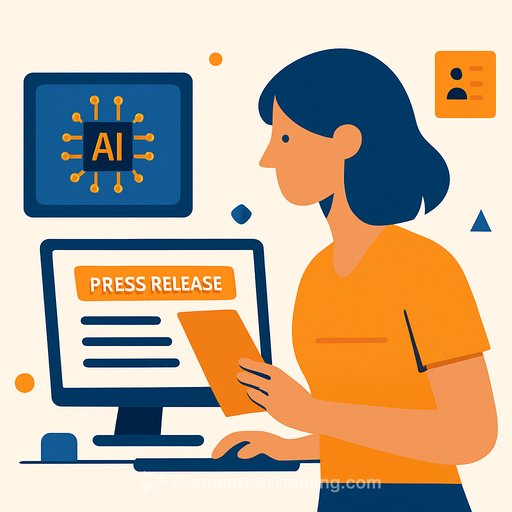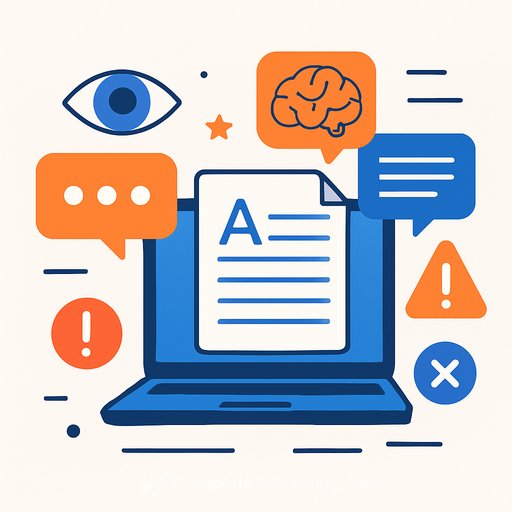AI is already writing your press releases and job posts. Here's how writers stay indispensable
A new study reports that roughly one in four press releases since late 2022 were produced with AI tools like ChatGPT or Gemini. Job listings show 6-10 per cent AI usage on average, reaching about 15 per cent for smaller firms.
Adoption surged fast and then levelled. Press releases peaked at 24.3 per cent AI use in December 2023 before settling slightly below that mark. Job posts followed a similar arc.
What the study found
Researchers analysed thousands of texts from Newswire, PRWeb, and PRNewswire and detected widespread AI assistance, especially in science and tech communications. English-language press releases from the United Nations rose from just over 3 per cent AI-generated in 2023 to almost 14 per cent in 2024.
The team also reviewed more than 687,000 complaints submitted to the US Consumer Financial Protection Bureau between 2022 and 2024. About 18 per cent showed AI assistance, with higher usage in regions with lower educational attainment-pushing back on common assumptions about who adopts new writing tools.
For context on the journal, see Patterns by Cell Press here. CFPB public complaint resources are available here.
Why this matters for writers
Clients will expect speed at AI pricing and nuance at human quality. Your leverage comes from judgment, specificity, and outcomes-things generic AI copy rarely delivers without strong direction.
The opportunity is to own the system: set standards, build processes, and control the last mile where meaning, accuracy, and brand risk live.
Practical moves to update your workflow
- Define a clear voice guide for each client: audience, tone, banned phrases, approval rules.
- Use AI for scaffolding only: outlines, variants, and quick rewrites. You handle facts, tone, and legal checks.
- Create reusable templates for press releases and job posts that force specificity (who, why now, proof, outcome).
- Institute a "two-source" rule for claims, metrics, and quotes. No unverified numbers make it to final.
- Add a final human pass for risk: compliance, DEI-sensitive phrasing, and brand consistency.
- Measure impact, not word count: pickup, CTR, quality of applicants, time-to-fill, and inbound inquiries.
How to compete on quality (what AI still misses)
- Context: why this announcement matters now and to whom.
- Original proof: quotes with substance, customer anecdotes, and specific outcomes.
- Structure that serves the reader: lead with the point, back it with evidence, close with clear next steps.
- Edge cases: legal phrasing, regulated claims, and regional compliance.
- Voice that feels lived-in: industry idioms used precisely, not as filler.
Press releases: a lean, repeatable framework
- Lead: the change in one sentence (what, who, outcome).
- Proof: numbers, customers, partners, or third-party validation.
- Context: why the timing matters (market shift, regulation, milestone).
- Quote with substance: specific stakes or impact, not platitudes.
- Next step: clear CTA for media or stakeholders.
Job posts: write for fit, not volume
- Define outcomes, not wish lists: "Ship X by Y date" beats vague responsibilities.
- Specify tools, collaboration model, and decision rights to filter mismatches early.
- State pay range and location policy clearly to reduce noise and build trust.
- Remove filler adjectives; add one practical screening question tied to the work.
What the plateau signals
Organizations are finding a balance between speed and oversight. AI handles first drafts; humans own relevance, risk, and results.
Writers who formalize this balance-policy, templates, QA-become the operating system for communications, not just the last-minute fixer.
Tooling that actually helps
- Keep a library of prompts and templates that enforce your standards for PRs and job posts.
- Use AI for variant testing on subject lines, leads, and CTAs-measure, then bake the winners into your templates.
- Maintain a living "fact base" doc with approved claims, boilerplates, and banned phrases.
If you want vetted tools and workflows for copy, start here: AI tools for copywriting. For role-specific learning paths, see courses by job.
Quick checklist for your next deliverable
- Did you lead with the point and the outcome?
- Are all claims sourced and current?
- Is the quote specific and useful, not generic?
- Does the piece reflect real audience needs, not internal jargon?
- Are compliance, DEI, and regional phrasing reviewed?
- Is the CTA obvious and measurable?
AI is now table stakes for first drafts. Your value is turning noise into signal, and speed into trust.
Your membership also unlocks:






